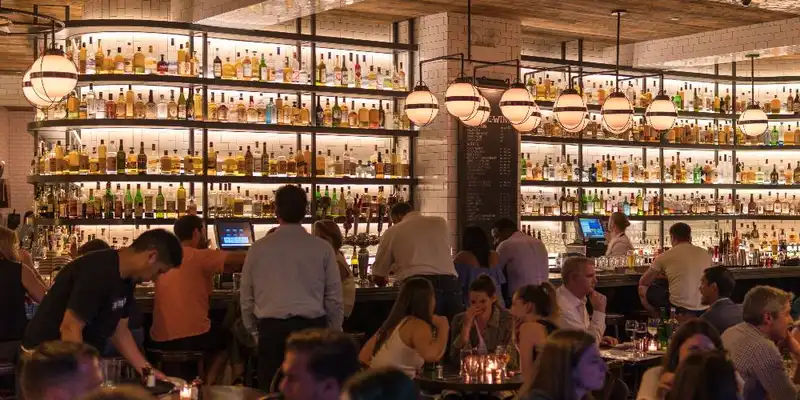Using Automation to Reduce Labor Costs in Restaurants
Introduction
Time and attendance management are two of the biggest challenges for restaurants.
With a number of employees spread across different departments, sometimes in different branches and on various shifts throughout the day, it can be challenging to manage everyone.
The solution? A scheduling software.
Experienced restaurant managers can usually predict their staffing needs for certain times of the year (for example, Christmas and New Year's) and even certain times of the day (lunchtimes are always busy!).
However, they still require a robust cloud-based system to keep track of everyone's productivity and whereabouts.
So it's only natural that the next step to better restaurant management is a scheduling software that provides restaurant owners unprecedented power over how, when, and where their employees work.
The Need For A Scheduling Software

Today, restaurant managers can measure and monitor pretty much everything.
For example, big data insights give them unprecedented access to information that can help streamline operations, find new opportunities for improvement, and enhance the overall dining experience for end-users.
That's why it is a shame that many owners and managers still try to build an employee schedule by hand, slaving up to 6 to 8 hours a week to get it right.
The trouble is that the pen-and-paper regime is long over and the potential chaos caused by a communication slip-up can be catastrophic to a restaurant. Think about it like this- if a restaurant is short-staffed, then those on the job have to multitask ultimately, this leads to bad service and unhappy customers.
Scheduling the staff properly is a critical aspect of running a restaurant day-to-day and eventually, it can also have a serious impact on your bottom-line.
Your Restaurant is Bleeding Money Due to Inefficient Scheduling

The fact of the matter is that most small and independent restaurants are operating on razor-thin profit margins of 2% to 6%. So if something isn't making money for them, then it's probably costing them precious funds.
Here are some of the most common scheduling mistakes that restaurants usually make
1. Using Intuition to Schedule
Many restauranteurs are guilty of relying on their instinct when making employee schedules. This might work for restaurants that have the same amount of work, day in and day out.
In reality, sales fluctuate with season, time of the day, time of the year and so on.
If a manager's "gut" tells them to schedule extra employees for next Friday because it "might" be busy, they are likely cutting into their long-term profits. In short, they are overspending on labor with nothing to base their decisions on.
Then there's the fact that the staff doesn't appreciate being called in when they are not needed or maybe they are overworked just because the manager's intuition said that they wouldn't need more staff on a particular day.
2. Wasting Time on Less Important Matters
Research shows that restaurant managers spend more than 8 hours every week on making employee schedules.
That's a massive chunk of the work week spent on making a schedule. And this doesn't take into account the time spent on swapping shifts, chasing staff to find out their availability, asking who's willing to be on-call just in case, and then changing the schedule accordingly.
We know that time is money now think about the cost of this time for your restaurant business. A restaurant manager's time is weighed on a per-hour basis. So, can they afford to spend so many hours per week working on an employee schedule, when there is software out there that can do it in less than half that time?
Wouldn't it be better for the restaurant if the manager uses the same time to do things that matter; like interacting with clients, streamlining operations, overseeing the staff, etc.?
3. Lack of Communication
With a staggeringly high turnover rate of 72%, the restaurant industry needs to make some changes quickly.
While seasonal hiring is the main culprit behind this fluctuation, employee satisfaction also plays a huge role in retention. This is a substantial financial burden for restaurant owners as they spend massive resources and time to train and on-board new people only to have them leave in a few months.
Restaurant employees often complain of a lack of communication and problematic scheduling as their reason for leaving. They are usually not kept in the loop about the schedule and any changes, and often find it challenging to communicate their problems to the management.
So, it's just easier for them to take their skills and move on to someplace else.
Finding the Right Staffing Balance It Is Possible

As a restaurateur, the only chance you have of overcoming these labor-related issues is by understanding what your staff needs.
For starters, hire the right person for the job find out their strengths and play to their powers. For instance, high-energy staff members are best suited to customer service as they thrive in a busy environment.
Then make sure that they are trained for the job and thoroughly understand their responsibilities.
In addition to offering competitive benefits and pay, it's also a good idea to ensure that they understand when and where they have to work or what their shifts and timings are.
Remember, fair scheduling will keep your staff happy and this way, they are more unlikely to leave.
Balancing Restaurant Staffing and Scheduling Needs
It is essential to focus on balancing the staffing needs of your restaurant with the individual requirements of each person. This is the only way to build an effective schedule that works well for your restaurant and your employees.
Labor costs account for part of the total revenue of a restaurant and an effective staff schedule can have a significant impact on this number.
Over staffing, spending too much on labor and understaffing all can leave you burned out employees and unhappy clientele.
That's why it is essential find out what your restaurant needs -- i.e. what kind services do you offer (dinner, cocktails, etc.) and how much staff will you need?
Then, balance this out with what your employees expect from the schedule. Do they have some family issues they need to cater to? Any preexisting commitments they need to fulfill?
Scheduling software can take the guesswork right out of this equation and ensure that the needs of both the parties are met fully.
Guessing and trial-and-error might have worked in the past, but focusing on and balancing your restaurant's staffing will allow you to build a more sustainable, effective scheduling strategy.
The Right Software Can Help With Shift Scheduling

It takes an army to keep a restaurant working like a well-oiled machine. A typical restaurant has the kitchen staff, wait staff, reps answering the phone calls and greeting guests at the door, the valet outside, cleaning staff, and the sommeliers, to name a few.
They often have to cover shifts 12-18 hours a day and deal with fluctuations of busy and downtimes throughout the year.
We've already established the fact that using spreadsheets or manually writing a plan for hours at end are not the most feasible and financially-sound ideas. Often, the resulting schedules are susceptible to human error, one that can wreak havoc in restaurant operations.
Automation is the answer, as it helps you put the right people in the right place at the right time and all of it happens at a fantastic cost. With a scheduling software, it is possible to create complex staff schedules around the needs of a restaurant, the constraints of an employee and deploy the plan quickly.
Here's what else scheduling software can do for you
1. Avoid Overstaffing
Overstaffing can have a considerable impact on the finances of a restaurant putting too many people on a shift when you don't need them means that you'll be paying their wages out of your pocket or profit for that day. This financial inefficiency can quickly put a restaurant over its budget.
Also, since staff members make most of their money from tips left by clients, they don't like working overstaffed shifts. This is because they have to share tables with more servers and end up with a smaller share of the tips. For many of them, this is a good enough reason to try and find another job.
2. Avoid Understaffing
Understaffing is just as big a money pit as overstaffing it keeps your staff from providing high-quality services, leading to unsatisfied clients and bad reviews.
Your staff may feel under-appreciated and overworked, and if they are burning out, then it's only natural for them to feel resentful towards the management.
This too leads to a high turnover and that's the one expense you should avoid at all costs.
3. Scheduling the Right Employees for the Right Shift
Proper scheduling doesn't just scheduling x-amount of people for a certain shift time. It's also about ensuring that the staff members get to work shifts that are right for their roles.
For example, each kitchen shift should have a line cook AND a sous chef on at all times to ensure smooth operations.
Similarly, new servers should be working with experienced wait staff on the same shift so they can understand their job on the go.
4. No More Last-Minute Excuses
Automated scheduling notifies all the employees at your restaurant about their hours and any changes to their schedules.
This means that there are no nasty surprises or eleventh-hour excuses. Everyone, across the board, has the entire schedule in the palm of their hands. This leads to fewer no-shows, better accountability and a marked decrease in last-minute scrambles to find staff replacements.
5. Lowers Labor Costs
An automated scheduling software gives you sales and labor data in real-time. In other words, it can analyze historical data and sales transactions to predict your staffing needs for the future.
Other practical and advanced features like budgeting and overtime alerts allow you to reduce your labor costs and streamline your operations.
Streamlining Staff Scheduling
The best possible way to ensure no-fuss scheduling is with a powerful software like ZIP Schedules. This helps keep employees on track by creating staffing shifts quickly.
The mobile app instantly notifies everyone on the list of any updates and changes to their work hours, thus giving you the power to integrate and process availability changes seamlessly.
Accepting the needs of your restaurant and your staff members helps you produce the best shift schedule that's right for everyone. The benefits of doing this will no doubt show up in your bottom-line, and your business will be all the more efficient for it.
Do you have any tried-and-tested advice for employee scheduling the right way at a restaurant? Let us know!
















































































